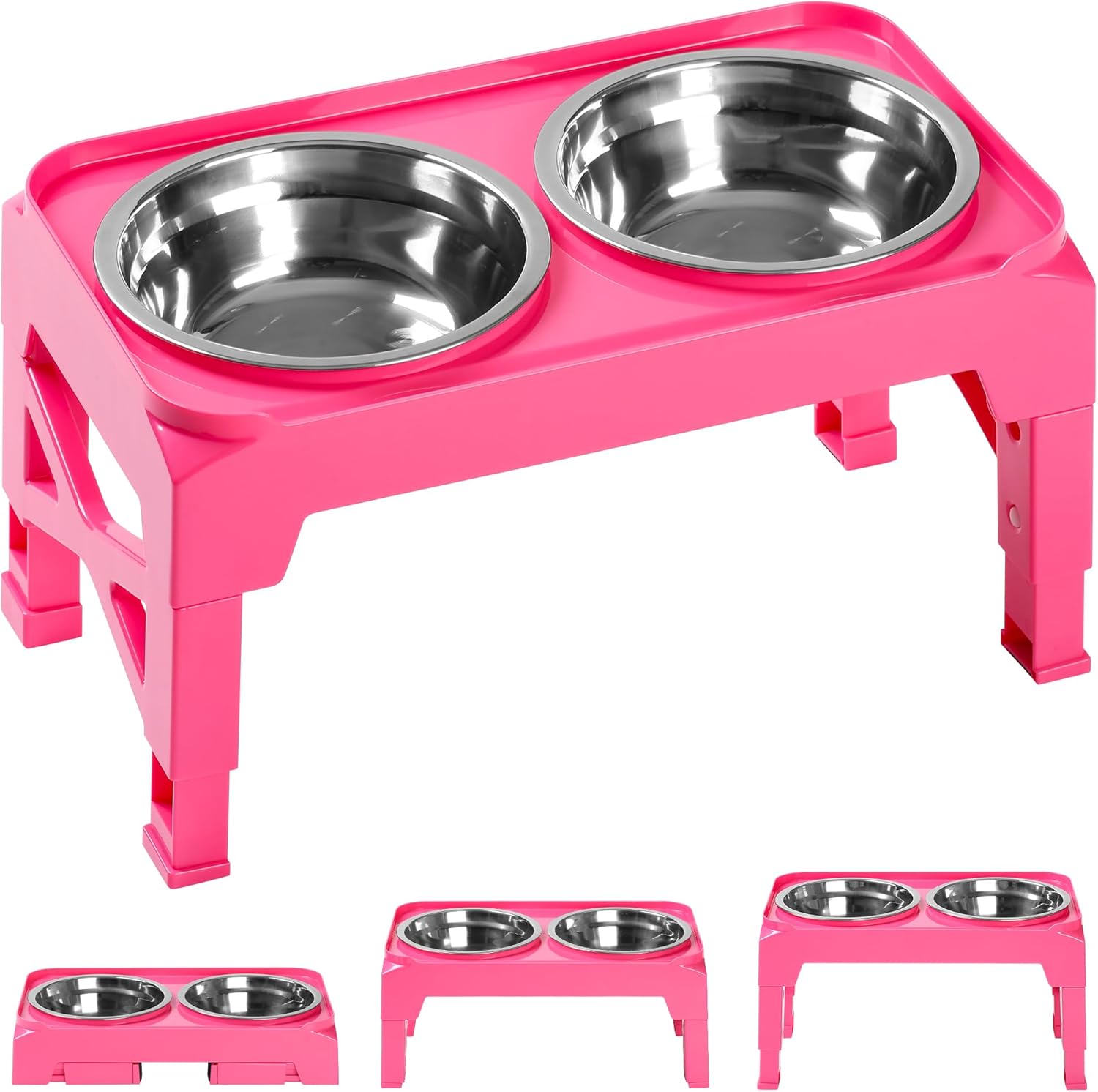How to Care for a Dog with Reproductive Health Problems
Introduction
Reproductive health is an essential aspect of a dog’s overall well-being, and when issues arise, they can significantly impact both the dog’s health and her quality of life. Reproductive health problems can manifest in various ways, from difficulty in mating and pregnancy complications to disorders of the reproductive organs. Recognizing these problems early and providing appropriate care can help manage and alleviate symptoms, ensuring your dog remains as healthy and comfortable as possible. In this article, we’ll explore common reproductive health issues in dogs, how to identify them, and how to care for a dog with reproductive health problems.
1. Pyometra: Uterine Infection in Dogs
What It Is:
Pyometra is a serious and potentially life-threatening infection of the uterus that most commonly affects older, unspayed female dogs. It can occur during or after a heat cycle and often requires immediate veterinary intervention. If untreated, pyometra can lead to sepsis, organ failure, or death.
Symptoms:
- Lethargy or weakness
- Increased thirst and urination
- Discharge from the vagina (may be yellow, green, or bloody)
- Fever
- Loss of appetite
Care and Treatment:
If you notice any of the symptoms of pyometra, take your dog to the vet immediately. Treatment typically involves emergency surgery to remove the infected uterus (spaying). Early detection is crucial to ensure the best chance of a full recovery. If your dog has recurrent pyometra, spaying may be the best long-term solution to prevent future infections.
Prevention:
The most effective way to prevent pyometra is to have your dog spayed. Spaying eliminates the risk of pyometra and other reproductive health issues, such as ovarian and uterine cancer.
2. False Pregnancy (Pseudocyesis)
What It Is:
False pregnancy occurs when a dog exhibits signs of pregnancy, such as nesting, lactation, and weight gain, even though she is not pregnant. This is usually caused by hormonal fluctuations after a heat cycle.
Symptoms:
- Nesting behavior (creating a den-like area)
- Swelling of the abdomen
- Milk production (lactation)
- Changes in behavior (more affectionate or withdrawn)
- Loss of appetite
Care and Treatment:
False pregnancy typically resolves on its own within a few weeks, but it can be distressing for your dog. Providing a calm and supportive environment is essential to help her cope with the hormonal changes. Limiting stimulation, such as discouraging her from nursing on toys, can help. If the condition doesn’t resolve or the symptoms worsen, consult your vet, who may prescribe medication to help regulate hormone levels.
Prevention:
Spaying your dog after her heat cycle can prevent false pregnancies. Additionally, if your dog has recurrent false pregnancies, your veterinarian may recommend hormonal therapy or other treatments to manage the condition.
3. Eclampsia (Hypocalcemia)
What It Is:
Eclampsia is a condition caused by low calcium levels in a dog’s body, usually occurring after giving birth or while pregnant. It is particularly common in small breed dogs and dogs with large litters. This condition can lead to seizures, muscle tremors, and other severe symptoms.
Symptoms:
- Muscle tremors or twitching
- Seizures
- Restlessness or agitation
- Inability to stand
- Excessive panting
Care and Treatment:
Eclampsia is a medical emergency and requires immediate veterinary attention. Treatment typically involves intravenous calcium supplementation to quickly raise the calcium levels in the dog’s blood. In less severe cases, oral calcium supplements may be recommended. If your dog is nursing, her calcium levels may be monitored more closely, and your vet may recommend calcium supplements for her throughout lactation.
Prevention:
Adequate nutrition, particularly during pregnancy and lactation, is essential in preventing eclampsia. Ensuring your dog receives a high-quality diet rich in calcium and other essential nutrients can help avoid this condition. Calcium supplementation during pregnancy or nursing may be advised for dogs with a history of eclampsia.
4. Canine Infertility
What It Is:
Infertility in dogs can result from various underlying issues, including hormonal imbalances, infections, or structural problems in the reproductive organs. Infertility can be frustrating for owners trying to breed their dog, but it is important to identify and treat the root cause of the problem.
Symptoms:
- Failure to conceive despite multiple mating attempts
- Abnormal or irregular heat cycles
- Lack of interest in mating
- Vaginal infections or abnormal discharge
Care and Treatment:
If your dog is having difficulty conceiving, it’s essential to consult a veterinarian. Tests such as hormone analysis, ultrasounds, or cultures may be required to diagnose the cause of infertility. Depending on the underlying cause, treatment options may include hormonal therapy, antibiotics (for infections), or surgery to correct any anatomical abnormalities.
Prevention:
Maintaining your dog’s overall health is key to preventing infertility. Proper nutrition, regular exercise, and avoiding environmental stressors can help keep her reproductive system functioning properly. Spaying your dog can prevent many reproductive health problems, including infertility.
5. Mastitis: Inflammation of the Mammary Glands
What It Is:
Mastitis is an infection or inflammation of the mammary glands, typically occurring in nursing mothers. It can cause discomfort, pain, and a decrease in milk production, and it can affect the health of both the mother and her puppies.
Symptoms:
- Swollen, warm, or painful mammary glands
- Redness or heat in the affected area
- Pus or abnormal discharge from the teats
- Decreased appetite and lethargy
Care and Treatment:
If your dog is showing signs of mastitis, it’s essential to take her to the vet for treatment. Treatment typically involves antibiotics to clear the infection, as well as anti-inflammatory medications to reduce swelling and discomfort. In severe cases, the affected mammary gland may need to be drained.
Prevention:
Good hygiene during the pregnancy and lactation period can help prevent mastitis. Ensure that your dog’s bedding is clean and that she is not exposed to irritants that can increase the risk of infection. If mastitis is recurrent, your veterinarian may recommend weaning the puppies earlier or adjusting the nursing schedule.
6. Reproductive Tumors
What It Is:
Tumors in the reproductive organs (ovaries, uterus, or mammary glands) can occur in dogs, particularly in unspayed females. These tumors can be benign or malignant and may require surgery to remove them.
Symptoms:
- Swollen abdomen
- Vaginal discharge
- Abnormal bleeding
- Lumps in the mammary glands
- Weight loss or lethargy
Care and Treatment:
Reproductive tumors should be evaluated by a veterinarian as soon as possible. Diagnostic tests such as ultrasound or biopsy may be needed to determine the nature of the tumor. In many cases, surgery to remove the tumor (and possibly the affected reproductive organs) is recommended. Chemotherapy or radiation may be required if the tumor is malignant.
Prevention:
Spaying your dog eliminates the risk of ovarian and uterine tumors. Regular veterinary checkups, especially for older female dogs, can help detect any reproductive issues early.
Conclusion
Caring for a dog with reproductive health problems requires attentive care, proper diagnosis, and, in some cases, medical intervention. By recognizing common reproductive health issues like pyometra, false pregnancy, and eclampsia, and understanding how to provide appropriate care, you can ensure that your dog stays healthy during this important phase of her life. Always consult with your veterinarian to determine the best course of action and treatment for your dog’s specific needs. Regular veterinary checkups and spaying are key to preventing many reproductive health issues, ensuring that your dog enjoys a long and healthy life.
Affiliate Products



